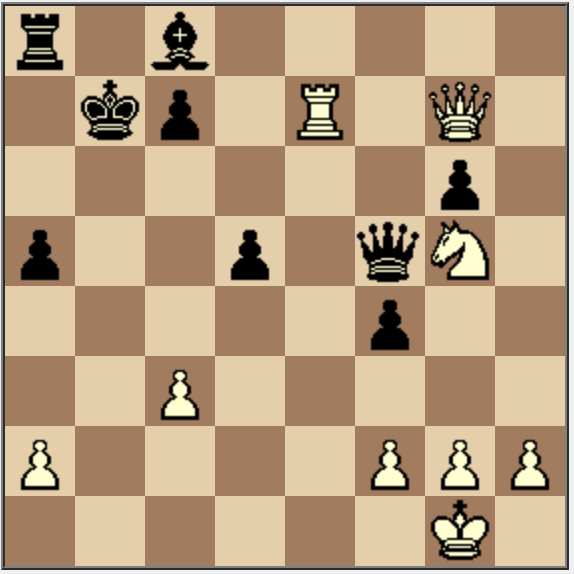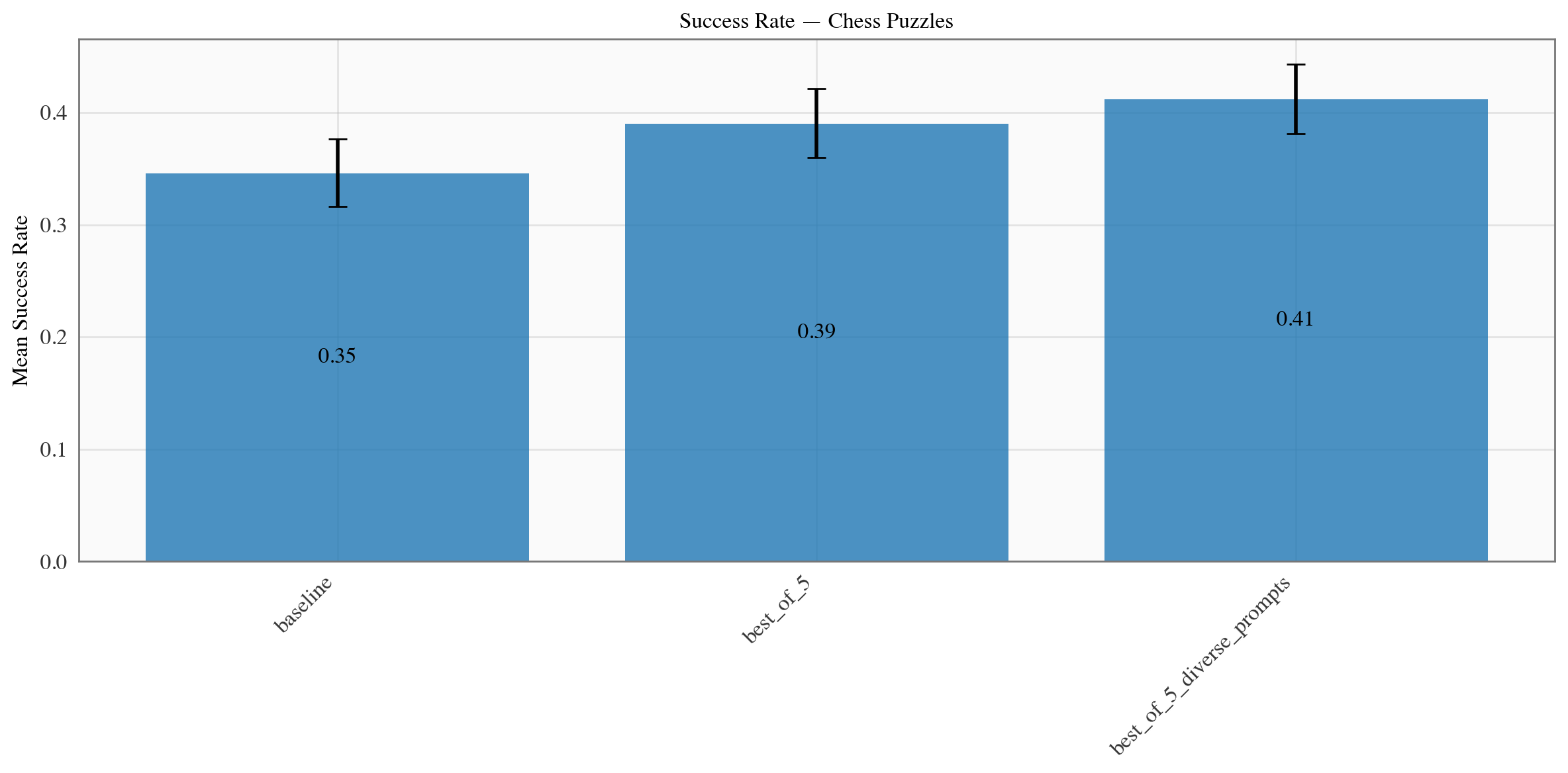TensorZero was built to support inference strategies more sophisticated than just a single chat completion. Today, we also support a best-of-n variant type which samples from several variants concurrently and uses another LLM call to select the best result.
In this example, we'll show how you can drop in this experimental best-of-n variant type to spend additional compute budget for better performance on a challenging LLM benchmark.
Chess puzzles are tactical challenges designed to test and improve a player's chess skills. They typically present a specific board position where the player must find the best move or sequence of moves to achieve a particular goal, such as checkmate, gaining material advantage, or forcing a draw. These puzzles are not only excellent training tools for chess players of all levels but also serve as an engaging way to assess an AI's ability to understand and apply chess strategies in complex situations.
We pulled a large dataset of Lichess chess puzzles from Kaggle. After filtering for popular puzzles that were rated to be relatively easy (rating in [800, 1200]), we produced training and testing datasets with ~130k and ~15k puzzles respectively.
Each puzzle consists of a board position and a sequence of moves that solves it. For example, here's a sample puzzle:
The puzzle consists of a sequence of moves that are "forced" on the player: the player and their opponent would each be significantly disadvantaged if they missed their next move. We can therefore evaluate an LLM by their exact match to the puzzle solution (or if they manage to achieve a checkmate). Give this puzzle a try!
Solution
- ... Qb1+
- Re1 Qe1#
We've written TensorZero configuration files to accomplish this example and have provided them in the config directory.
See tensorzero.toml for the main configuration details.
To get started, create a .env file with your OpenAI API key (OPENAI_API_KEY) and run the following command.
Docker Compose will launch the TensorZero Gateway and a test ClickHouse database.
docker compose upUsing uv (Recommended)
uv venv # Create a new virtual environment
uv pip sync requirements.txt # Install the dependenciesWe recommend using Python 3.10+ and a virtual environment.
pip install -r requirements.txtYou can run the example in the chess_puzzles.ipynb notebook.
Make sure to install the dependencies in the requirements.txt file and set CLICKHOUSE_URL=http://localhost:8123/tensorzero in the shell your notebook will run in.
It should not require any changes to run and will automatically connect to the TensorZero Gateway you started.
The notebook will evaluate the performance of the default gpt-4o-mini variant on the test set of chess puzzles.
If you look at the tensorzero.toml file, you'll see that we've defined a best-of-n variant type for the play_chess_board function.
This means that we'll run 5 separate inference requests to the LLM, and use another LLM to select the best result.
These are all instances of the gpt-4o-mini variant.
Without modifying the prompt or the model used, we can trade more tokens for a statistically significant improvement in performance (we saw ~10% relative improvement from 35% to 39% success rate with no prompt changes and further improvement to 41% with small variations to the prompt as in the section below).
Here are our results:
You might want to try diverse instructions for each LLM call.
We've included several other prompt templates in the config/functions/play_chess_board/chess_* directories.
We also can modify the variant_name variable to try out different best-of-n variants.
You can mix and match these in the tensorzero.toml file to try out different configurations.
We saw the diverse variant squeeze a few extra percentage points of performance from the same model and compute budget.
See for yourself if you can get better performance than our gpt-4o-mini_best_of_5_diverse example!
For example, you could try mixing candidates that use different LLMs.
You now have a ClickHouse database with a ton of trajectories of LLMs trying to solve chess puzzles.
Consider our library of recipes for ideas on how to use this dataset to improve further!
Since this data ended up in ClickHouse, we also included a test set at data/lichess_easy_puzzles_test.csv (use dryrun=True to avoid leaking it) to evaluate variants on held-out data.

